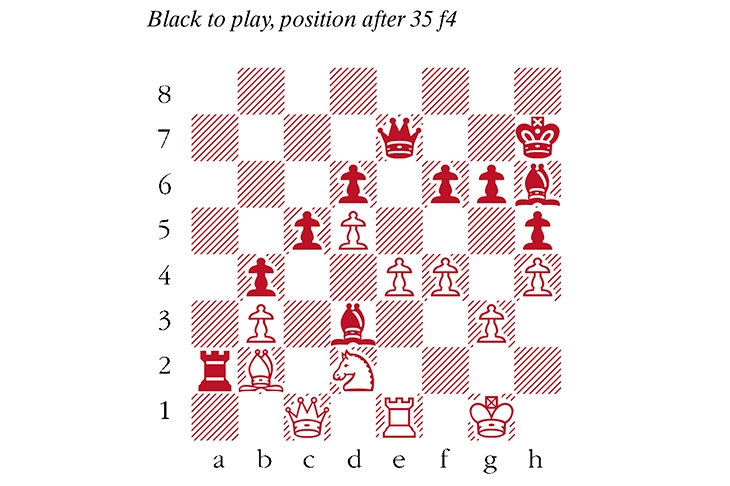Three consecutive losses in a tournament is dryly termed ‘castling queenside’, in reference to the chess notation for that move (0-0-0). Carissa Yip went one worse, starting with four demoralising zeros at the Cairns Cup in St Louis this month. The 16-year-old American was the lowest ranked player in the elite women’s all-play-all tournament, so it wasn’t about to get any easier, and her experienced opponents were surely looking to capitalise.
In the fifth round, she bounced back in style with a win over seven-time US women’s champion Irina Krush. ‘Someone told me that
I should just fake it till I make it,’ Yip explained after the game. Those were wise words, not just teenage insouciance. Some measure of confidence is simply indispensable for playing good chess. Josh Waitzkin (the subject of the film Searching for Bobby Fischer) wrote in his book, The Art of Learning: ‘At one point, after [Garry] Kasparov had lost a big game and was feeling dark and fragile, my father asked [him] how he would handle his lack of confidence in the next game. Garry responded that he would try to play the chess moves that he would have played if he were feeling confident. He would pretend to feel confident, and hopefully trigger the state.’
Once you get it back, that most capricious commodity can nourish itself. It might take months, but for Yip it took days; she built on her comeback with two more wins in the second half, notably beating Women’s World Champion Ju Wenjun with the Black pieces in the game below. She seized the initiative in an unusual middlegame, and followed it up with incisive play on both sides of the board. Ju finished in second place behind India’s Humpy Koneru, whose strong strategical play throughout the event
won her the $45,000 first prize.
Ju Wenjun–Carissa Yip
St Louis, February 2020
1 e4 e5 2 Nf3 Nc6 3 Bb5 a6 4 Ba4 g6 5 d4 exd4 6 c3 Bg7 7 cxd4 b5 8 Bb3 Nge7 9 d5 Na5 10 Bd2 Nxb3 11 Qxb3 c5 12 Bc3 f6 13 a3 d6 14 h4 Played to restrain g6-g5 and Ne7-g6, not to begin an attack. 14…O-O 15 Nbd2 Qe8 16 O-O Bd7 17 Qc2 Rc8 18 b3 h6 19 a4 Ra8 20 axb5 axb5 Here or on the next few moves White should consider the advance b3-b4, since…c5-c4 would allow Nf3-d4, eyeing up b5 and e6. 21 Rxa8 Qxa8 22 Ra1 Qb7 23 Qa2 Nc8 24 Ne1 b4! 25 Bb2 Bb5 Black has taken control of the game, as White cannot secure a knight on c4. 26 Nc2 Bd3 27 Ne3 Qe7 28 Re1 Nb6 29 Qa1 Ra8 30 Qc1 h5! Preparing Bg7-h6 to increase the pressure 31 Nec4 Nxc4 32 Nxc4 Ra2 33 g3 Kh7 34 Nd2 Bh6 35 f4 (see diagram) 35… Qa7! The immediate 35…Qd7 was well met by 36.Re3 36 Nc4 Qd7! 37 Re3 Bxc4 38 bxc4 Qg4 39 Kh1 Bxf4! 40 gxf4 Qxh4+ 41 Kg1 Qg4+ 42 Kh1 Qxf4 Black will regain a piece by force, e.g. 43 Re1 Qf2. 43 Qb1 Rxb2 44 Qxb2 Qxe3 45 Qxf6 Qxe4+ Three pawns to the good, the rest is straightforward. 46 Kh2 b3 47 Qf7+ Kh6 48 Qf8+ Kg5 49 Qd8+ Kf5 50 Qd7+ Ke5 51 Qg7+ Kf4 52 Qf6+ Kg4 53 Qe6+ Qf5 54 Qxd6 Qf2+ 55 Kh1 Qf3+ 56 Kh2 Qh3+ 57 Kg1 Qg3+ White resigns






Comments